Welcome to the first of what we’re hoping to be a regular feature looking at how different countries from around the world approach the same show. We’ve often lobbied for a remake of TV’s toughest quiz The Krypton Factor because it was always really ace. We even quite liked the 1995 version which nobody else did.
But never mind that. Today we’re more interested in seeing how another country adapted a format. This time round, the show is The Krypton Factor, the year is 1981 and the country is the USA, on the ABC network.
We apologise in advance for stopping this analysis a couple of minutes before the end. For one reason or another, my DVD messes up at that point. Luckily I haven’t thrown away the original tape so hopefully at a later date we’ll be able to fill you in on what happens during the last few minutes.
Here are our titles. A voiceover explains that in each generation there’s a search for the ultimate physical and mental being. This is the search for… The Krypton Factor. Music is high-pitched synths.
Contestants are introduced by having them sprint into the camera with their details overlaid.
And here they are in a very yellowy-orange studio. Lovely.
Note the podiums. Amongst other things, these show how many points a contestant has earnt during a round. Unlike our version, with the exception of the physical round, players aren’t graded first through worst and given points based on their position in a round. Each task carries a certain amount of points which anybody who succeeds gets.
Here’s our host Dick Clark in suit and bow tie and surrounded by lots of futuristicy gubbins. And a phone, for some reason. Note the scoreboard behind him.
The Krypton Factor has a top prize of $50,000 in gold which is given to the winner of the grand final. This appears to be the fourth and final qualifying round.
Round one tests “reflex speed”. That will be the US equivilent of “Response”, then.
And the game is Stagecoach on the Atari VCS. The contestant controls a cowboy on the left whilst a target bounces up and down on the right. Meanwhile stagecoaches run down the middle of the screen. The contestant has to get two shots on target within fifteen seconds.
Success! And success earns her five points.
Mental agility forms “phase 2” of the competition and this appears to be a drop out phase. The first question is worth four points, the second question is worth six but getting a question wrong eliminates you from the round.
The first question involves numbers. The contestant is given five numbers and they have to repeat back the sequence with one added on. So in this example, she’s been given “11, 6, 19, 3, 7,” and her correct response is “12, 7, 20, 4, 8.”
For the second question the contestants are read out a list of six states which the contestant needs to repeat back in reverse order. She messed up on Louisiana here.
Here’s the master scoreboard. Gary Boone may not have been very good at reflex speed but he was the only person to get both mental agility questions right.
It’s the physical agility round and a course that’s been designed to be fair to both men AND women.
Let’s not forget that the British version was a proper army assault course which gave the women a thirty seconds headstart.
We begin with the deathslide (or the “slide for life” as Clark calls it. If anyone knows the difference between the two then please do write in).
Land on the inflatable crash mats, unclip, run round the corner straight onto the…
…balancing floating pontoon things. Oh! Our race leader Andrew Lessman seems to have fallen in the water. That will cost him precious seconds in what is looking like a tight race…
And then it’s through the twisty-turny tubes. Or a half-arsed tunnel. We’re not sure which.
And then onto my personal favourite bit, the physically demanding drive a dune buggy section. We kid you not. We hear the audience giggle several times throughout this bit for no discernable reason.
Park the buggy and run over to the swings. The idea is to swing high enough to kick the button at the top of the doorframe which collapses the door.
And it’s a race to the finish line in inflatable “wonderwheels”.
And here are the reults, 20 points going to the winner down to just five for finishing last.
Round four is the observation round. The contestants are shown a clip from a film (in this case the Richard Prior classic Bustin’ Loose) and are asked a specific visual information question for four points and a specific dialogue question (and they must get the words exactly right) for a further six.
There is a third part to the round though and it’s worth ten points. Contestants are asked to identify one of the more notable extras from the clip in real life. There are six men here but only one of them is the real extra.
As you can see from the podiums, three of them think it’s old man number four, whilst one contestant thinks it’s number two. In fact it was old man number one!
And he would have got away with too if it weren’t for you meddling kids.
It’s the final general knowledge round. Note the set has got darker and that a second scoreboard has been bought down from the rafters.
Like our version, the answer to one question will be mentioned in another context in the question following, so those with good instinct may be able to predict which way the next question may be going.
Also like our version each question is worth two points, with a two point penalty for answering incorrectly…
… that is until halfway through the round when a klaxon goes off. Now each question is worth four points on or off. For some reason.
This is the point where the DVD stops working we’re afraid. The winner of the round goes through to the final the next week – we’ll update this page at some point when we ‘do’ a remaster.
So what have we learnt? We have learnt that to be the supreme champion it helps if you are good at go-karting, have excellent recall and have a fondness for knowing things that may come up in the second half of quizzes. You can almost certainly get by with little in the way of “reflex speed” and mental agility.
Wot? No intellegence round?
EDIT: Thanks to Bryan W Moore for this information:
“I’ve recently seen your feature on the US version of The Kryption Factor from 1981 on your web site. According to the US book “The Encyclopedia of TV Game Shows – Volume 3” I should mention that the US version “The Krypton Factor” returned on September 15th of 1990 as a weekly syndicated show with kids competing in a year-long competition to attempt to win a US$20,000 cash prize.
The format this time is like this…
Round 1 tests intelligence with each player being individually asked two questions each worth ten points and, in addition a five-point bonus question.
Round 2 tested observation as with the 1981 version with the exception of ten-point questions and a ten-point bonus round on identifying the object in the scene by virtue of five clues.
Round three is the “Physical Ability” test with the same scoring as the 1981 version.
The final round on General Knowledge lasts two minutes instead of three with the players competeing against each other. Correct answers add five points to a player’s score and wrong answers subtracting five from a player’s score.
The player with the most points when time expired won merchandise prizes and played in the next round of competiton. The 1990 version was hosted by Willie Ames from US tv shows “Swiss Family Robinson” and “Charles in Charge.”
The syndicated version of The Krypton Factor ended on September 7th of 1991.”
This article was originally written in 2005, the following comments were left in the original comment box:
Anton Spivack:
Actually these are the rules to the 1990 version of the Krypton Factor:
1) Intelligence: This was played in two rounds. In each round each player was asked a ten-point question based on a picture, then three toss-up questions were asked on the four pictures. The first player to jump-in to each question got to answer, and received five points for a correct answer, but lost two points for an incorrect answer.
2) Observation: The players were shown a clip from a public domain film or cartoon and were each asked two ten-point questions on what they had seen and heard. Afterward a bonus round was played where five clues were given to an object used or mentioned in the film. A player who jumped in and provided the correct answer earned ten points, but an incorrect answer meant that the player had to sit out the round.
3) Physical Ability: This was played on an obstacle course set up in Palos Verdes, California. This obstacle course included a zip line, a bicycle race, a balance beam, a rope swing, road obstacles (such as transporting water through tangled ropes, and finally the Krypton Pavilion, where players had to negotiate a series of tubes and rope obstacles before crossing the finish line. Scoring was the same as the 1981 version.
4) General Knowledge: Players were asked a series of questions for two minutes, and the first player to jump in got to answer. A correct answer scored five points but a wrong answer cost two. The player with the highest score at the end won a prize package, and the eight highest-scoring members of each sex moved on to the four quarter-final matches, from which the four highest-scorers of each sex advanced to the two semi-final matches. The two highest scoring boys and girls from the semis faced off in the finals for $20,000 in cash.

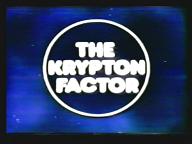
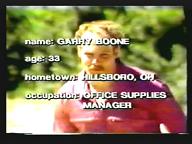
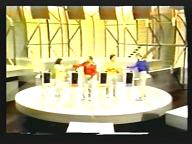
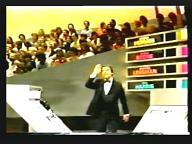
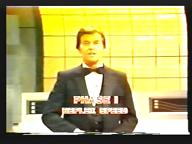
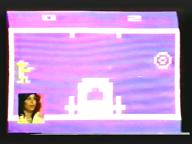
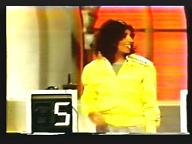
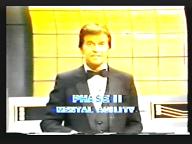
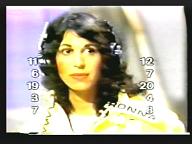
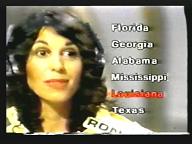
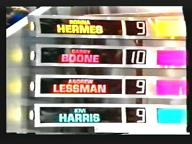

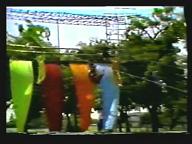
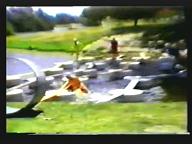
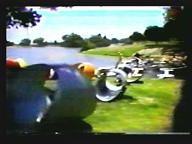
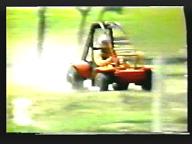
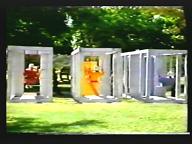
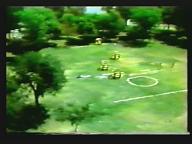
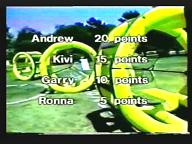
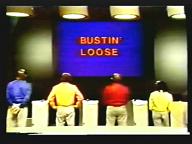
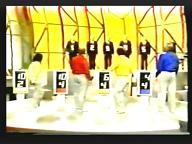
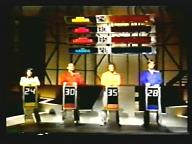
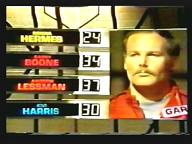
Actually, I have to make a few revisions to the Physical Ability test from the 1990 version. The players had to carry a beach ball while crossing the balance beam and then drop it off before the rope swing. The road obstacles consisted of carrying water through ropes, executing a forward roll, and then carrying two plates around a series of posts. In the early episodes the road obstacles were between the balance beam and the rope swing and the players just carried their beach balls through tangled ropes and balls. Also, in the 1990 semifinals, it was the highest-scoring girl and boy from each episode who made it to the finals.
I remember watching the 1981 version of “The Krypton Factor”, and rather liking it. Back then, there was no YouTube, Bother’s Bar or other venue for sharing information on the different incarnations of a game show that different countries could offer. I do remember liking “The Krypton Factor”, though.
I don’t remember the 1990 version of the show. I don’t think it played in the Los Angeles (California) market. I’d have tried to watch it had it run here.
I do have a 1978 issue of “TV Times” (July 8-14), which has a two-page spread on the “Krypton Factor” obstacle course. If I knew how to do so, I’d be happy to scan it over for you. But I am still something of a “newby”, and this computer is so old and underpowered that I refer to it as the “computrola”, with a winding crank in its side!
The 1990 version of the Krypton Factor is now on YouTube at http://www.youtube.com/watch?v=RFPaCoqgKIc
I’m glad I’ve seen this (and I thank Tony duMont for putting it up) but crikey, it’s *excruciating*.
The intelligence round is not so much an intelligence test but a pictorial general knowledge one. The observation film felt like it took forever (although in fairness the “what’s in the box” bit is a reasonable enough alternative to the identity parade). The obstacle course is edited in such a way so as to not tell a story or look exciting or anything (and really, that music?). The question linking in the GK round feels really hammered in, and multiple choice questions in this bit are rubbish.
Willie Aimes seems really unsure of anything and false starts constantly. He’s slightly better in the quarter final episode, but still not great.
It’s an interesting curio and I’m glad I’ve had the chance to see it. But it’s really not very good.
I was always vaguely amused by Keith Lemon’s lazy gag of Americans stressing the second halves of words where British English would stress the first halves (e.g. “sec-TOR”). Having a wife from the US, I thought there was no truth in it at all. Seeing the Kryp-TON Factor, I am thinking again.
Willie Aames voiced Hank the Ranger in the Dungeons and Dragons cartoon a few years earlier. The show’s easier to watch if you imagine Hank hosting.
That is a brilliant fact!
MAKE IT STOP! MAKE IT STOP!
I agree it’s a mediocre adaptation. They needed a real Intelligence test, and the editing was lousy, plus the whole game was just too easy, especially with the multiple choice. And did they have to guarantee an equal number of boys and girls competing? However, I have a friend who likes it the best because it’s more “game show-y,” because of the sound effects and the prize packages. But that’s not what The Krypton Factor was about. He seems to prefer packaging over substance, while I prefer a solid gameplay over bells and whistles. But he is a huge fan of Catchphrase.
So, will there be a separate page for the 1990 US version? My aforementioned friend told me who won it, but if you give away $20,000 to a teenager on a game show, and you aren’t even remembered, it’s not a good sign.